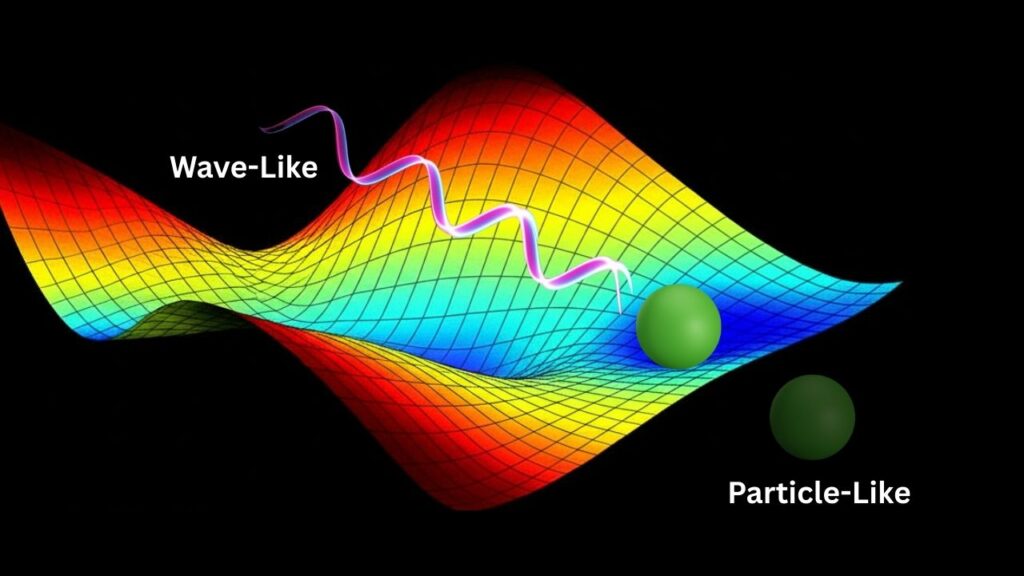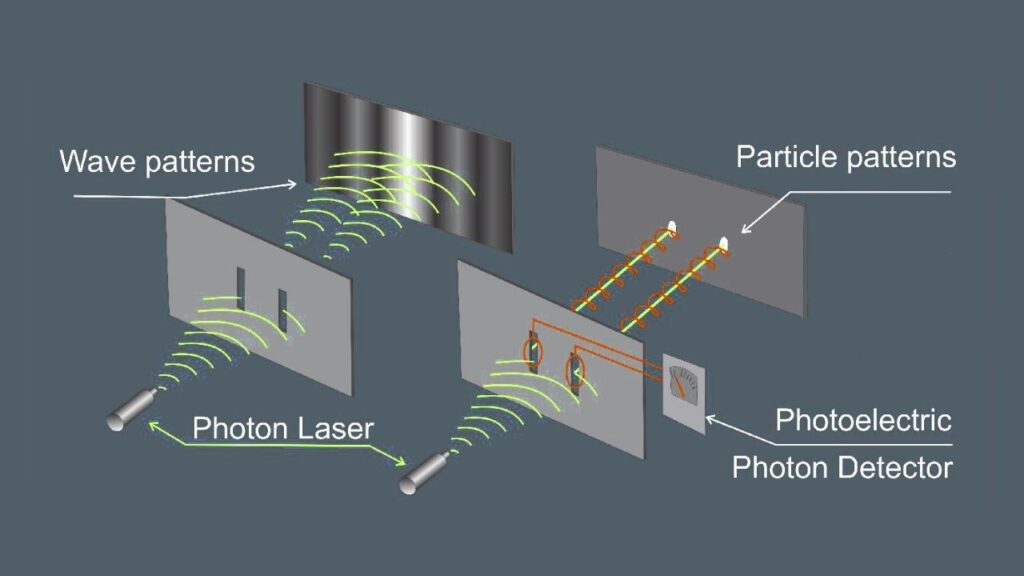The debate over light’s true nature—whether it behaves as a wave, a particle, or somehow both at the same time—has puzzled scientists for over a century. Recently, MIT physicists performed the most precise and “idealized” version of the famous double-slit experiment. Their groundbreaking results disprove Albert Einstein’s long-held conjecture and decisively confirm the fundamental quantum principle that light cannot simultaneously act as both a wave and a particle. This achievement not only settles a near 100-year-old debate between Einstein and Niels Bohr, but it also opens fresh doors to understanding the mysterious quantum world.

In this comprehensive article, you’ll learn the context behind this historic experiment, the quantum concepts involved, why MIT’s approach is revolutionary, and what it means for physics today and tomorrow. We’ll break down complex ideas into easy-to-follow insights for readers of all ages, while also providing detailed analysis for professionals.
Table of Contents
MIT Just Proved Einstein Was Wrong
| Aspect | Details |
|---|---|
| Experiment Type | Most idealized double-slit experiment using ultracold atoms and single photons |
| Institution | Massachusetts Institute of Technology (MIT) |
| Key Finding | Light cannot simultaneously display wave and particle behaviors; measuring one destroys evidence of the other |
| Impact | Resolves nearly 100-year debate between Einstein and Bohr over quantum indeterminacy |
| Quantum Principle Confirmed | Bohr’s uncertainty principle and quantum measurement effect |
| Lead Researcher | Wolfgang Ketterle, John D. MacArthur Professor of Physics at MIT |
| Published In | Physical Review Letters, 2025 |
| Official MIT experiment link | MIT News – Double-Slit Experiment |
The MIT physicists’ idealized double-slit experiment decisively shows that light cannot simultaneously behave as both a wave and a particle. By using ultracold atoms and single photons, the team provided a quantum-level proof that confirms Niels Bohr’s interpretation and disproves Einstein’s conjecture from nearly a century ago.
This experiment represents a landmark in quantum physics, deepening our understanding of measurement’s strange role in quantum systems while paving the way for advancements in quantum technologies.
It’s a shining testament to how modern science can re-examine and resolve historic debates with precision and creativity.
Understanding the Double-Slit Experiment: The Quantum Mystery
Imagine shining a flashlight through two tiny slits onto a screen. If light were just a particle—think of it like tiny marbles—you’d expect two bright spots corresponding to the slits. If it behaved like a wave—think ripples in a pond—you’d see a series of light and dark bands called an interference pattern, because waves overlap, enhance, or cancel each other out.
The double-slit experiment has been a cornerstone of physics since British scientist Thomas Young first performed it in 1801, showing conclusively that light exhibits wave-like behavior. But in the 20th century, quantum physicists discovered that light also behaves as particles called photons. This wave-particle duality baffled scientists, especially Einstein and Bohr.
Einstein vs. Bohr: A Historic Quantum Debate

In 1927, Einstein challenged the mainstream quantum mechanics view. He suggested a clever idea: when a photon passes through one slit, it should subtly disturb the slit—like a bird rustling a leaf. This disturbance could, in theory, be detected, allowing us to observe both the wave-like interference and particle-like behavior at the same time.
Niels Bohr argued against this, invoking the uncertainty principle. Bohr said that any attempt to measure the photon’s path would disturb the wave interference pattern, making it impossible to observe both aspects simultaneously.
Since then, experiments have leaned towards Bohr’s interpretation, but until now, there wasn’t any single “idealized” experiment that definitively ruled out Einstein’s idea.
MIT’s Revolutionary Experiment: A Modern “Gedanken” Realization
MIT’s physics team, led by Wolfgang Ketterle, took on the challenge to create an ultra-clean and precise version of the double-slit experiment. They used ultracold atoms arranged in a lattice as the slits themselves, making them the smallest slits possible—on the scale of single atoms.
Instead of shining normal light, they used individual photons passing through these atomic-scale slits. By putting the atoms into different quantum states (a way of controlling their fuzziness or position uncertainty), the team could fine-tune how much information was available about the photon’s path.
This set-up allowed them to directly test the idea that the more precisely you know which slit a photon passed through, the more the interference pattern disappears.
Key Findings from the MIT Experiment:
- When the atoms “know” more about the photon’s path (particle behavior), the wave-like interference pattern fades.
- Conversely, when the atoms remain less certain, the interference pattern emerges clearly.
- The act of measurement itself forces the photon to “choose” between wave and particle behavior.
- This directly disproves Einstein’s proposal that one can detect the path (particle) and still observe wave interference simultaneously.
- The results perfectly aligned with Bohr’s quantum mechanical predictions.
As Ketterle says, this was an idealized Gedanken experiment (a thought experiment) finally realized in real life.
Why Does This Matter? Practical Implications and Future Directions
Quantum mechanics underpins many modern technologies, from semiconductors and lasers to quantum computing and cryptography. Confirming foundational principles with such precision increases our understanding of the quantum world and helps refine future applications.
Upcoming impacts include:
- Designing better quantum sensors that rely on the fragile wave-particle balance.
- Improving quantum communication systems by exploiting or controlling quantum measurement effects.
- Enhanced quantum computing architectures that depend on superposition and measurement.
Moreover, this experiment marks a milestone in the physics community by settling an enduring scientific rivalry and beautifully illustrating why the nature of quantum measurement is so subtle and fascinating.
Breaking Down the Science: A Simple Guide to the Quantum Concepts
What is Wave-Particle Duality?

- Light and matter have a dual nature: sometimes behaving like particles, sometimes like waves.
- It depends on how you observe them—measurement “collapses” this duality to one behavior.
What is the Double-Slit Experiment?
- A light source shines through two slits onto a screen.
- Without observation, light creates an interference pattern (wave-like).
- With observation of the path, the pattern disappears (particle-like).

What Was Einstein’s Prediction?
- He believed it might be possible to detect both wave and particle properties simultaneously by measuring subtle forces on the slits.
How Did MIT Test This?
- Used ultracold atoms as slits.
- Sent single photons through.
- Tuned atoms’ quantum states to control path information.
- Measured how the interference pattern changed as path information increased.
Breakthrough Material Could Become the Future of Quantum Information Storage
Quantum Teleportation Achieved on a Chip — A Major Leap Toward Modular Quantum Computers
Diamond Precision May Be the Key to Scalable Quantum Devices, Scientists Say
FAQs About Wave-Particle Duality
Q1: Why can’t light be both a wave and a particle at the same time?
Because measuring one behavior necessarily changes the quantum system, destroying evidence of the other. This is a cornerstone of quantum mechanics called the measurement principle.
Q2: What made MIT’s experiment different from previous ones?
They used atomic-scale slits and controlled the quantum states of the atoms to tune the amount of path information, achieving the most idealized and precise conditions ever.
Q3: Does this mean Einstein was completely wrong about quantum mechanics?
Einstein contributed hugely to physics but was skeptical about quantum indeterminacy. This experiment disproves his specific idea about measuring both wave and particle behavior simultaneously.
Q4: How does this impact everyday technology?
It improves our understanding of quantum measurement, essential for quantum computing, cryptography, and high-precision sensors.



















